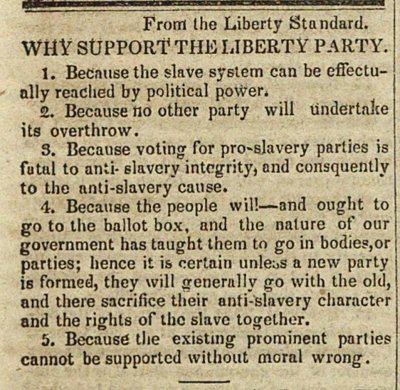
“Why Support the Liberty Party” newspaper clipping. Source: Public Domain.
The Liberty Party, with a platform focused on abolition, held its second convention on Aug. 30, 1843 in Buffalo, New York.
The party was an early advocate of the abolitionist cause and it broke away from the American Anti-Slavery Society to advocate the view that the Constitution was an anti-slavery document.
Frederick Douglass, Henry Highland Garnet, William Lloyd Garrison, Lucretia Mott, and Wendell Phillips were members and supporters.
Salmon Chase, Liberty Party leader in Ohio, explained the Liberty Party’s abolitionist views in speeches in 1844 and 45,
Slavery [is] the complete and absolute subjection of one person to the control and disposal of another person, by legalized force. We need not argue that no person can be, rightfully, compelled to submit to such control and disposal. All such subjection must originate in force; and, private force not being strong enough to accomplish the purpose, public force, in the form of law, must lend its aid. The Government comes to the help of the individual slaveholder, and punishes resistance to his will, and compels submission. THE GOVERNMENT, therefore, in the case of every individual slave, is THE REAL ENSLAVER, depriving each person enslaved of all liberty and all property, and all that makes life dear, without imputation of crime or any legal process whatsoever. This is precisely what the Government of the United States is forbidden to do by the Constitution. The Government of the United States, therefore, cannot create or continue the relation of master and slave. Nor can that relation be created or continued in any place, district, or territory, over which the jurisdiction of the National Government is exclusive; for slavery cannot subsist a moment after the support of the public force has been withdrawn.
For a related lesson, see “‘If There Is No Struggle…’: Teaching a People’s History of the Abolition Movement” and more resources below.

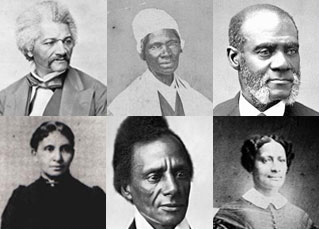

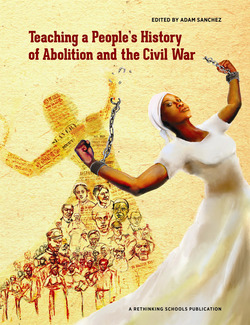
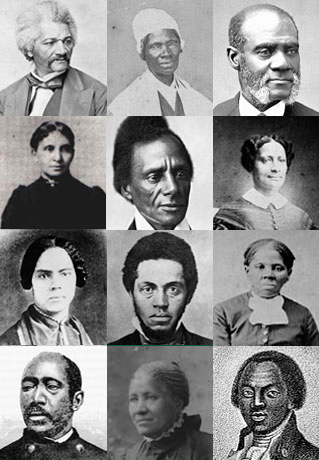
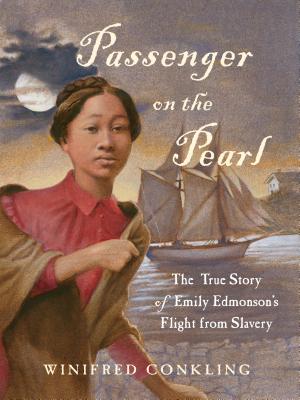
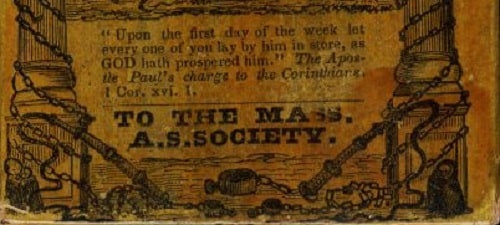





Twitter
Google plus
LinkedIn